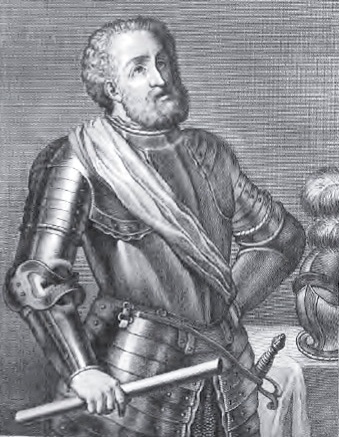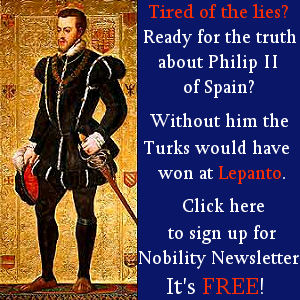The Moors soon after this began to make fresh trouble, and invaded the kingdom of Castile with a very large force. There came with them five kings, who plundered and robbed along their path, carrying away as prisoners both men and women, as well as horses, cattle, and sheep. After they had committed these depredations, they were making haste to return to their country and get off with the spoil; but news came to Rodrigo of what they were doing, and he at once mounted his horse and rode about among his countrymen, calling upon them to follow him and give battle to the Moors. Thus he raised a great company, and pursued the enemy until he overtook them in the mountains. There Rodrigo and his companions fell upon the Moors and after a hard battle defeated them, recovered all the prisoners and the spoil, and made the five kings captive.
Rodrigo then divided all the spoil among the noblemen and his other followers, and he set the five kings at liberty. These kings were so delighted with his magnanimity, that they promised to send him tribute, and became his vassals, calling him “El Seid”; that is, they acknowledged themselves dependent upon him as if he were a great king. So they returned to their own country. Thus Rodrigo had not only relieved his countrymen who were in distress, but he had won for himself allies and friends among the Moors themselves. From that time forward he began to have a great name among both the Spaniards and the Moors. . . .
About this time, the king received a request from the people of the kingdom of Leon that he would re-people the city of Zamora, which had been desolate since it was destroyed by Almanzor. The king [Ferdinand I, King of León] thought well of this plan, and carried thither many men and women, and reorganized the city. During the time the king was at this place, messengers came from the five kings who were vassals of Rodrigo, bringing him their tribute. These came to Rodrigo, while he was in the presence of the king, and called him “El Seid,” or Cid, which signifies Lord; and they would have kissed his hands, but he would not permit them to do so until they had kissed the hand of [King Ferdinand]. Then Rodrigo offered one-fifth of the tribute to the king as an acknowledgment of loyalty to him as his sovereign, but the king would not receive it. [King Ferdinand], having heard the Moors call Rodrigo “Cid,” was pleased with the title, and ordered that he should be called so by the Spaniards also. So from that time forward Rodrigo began to be known as the Cid.
Calvin Dill Wilson, The Story of the Cid: For Young People (Boston: Lee and Shepard, 1901), 19 –20, 41–42.
Short Stories on Honor, Chivalry, and the World of Nobility—no. 798









